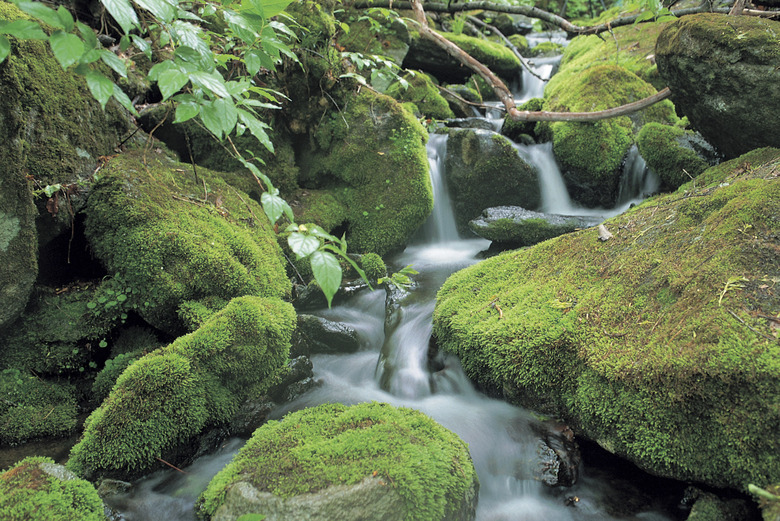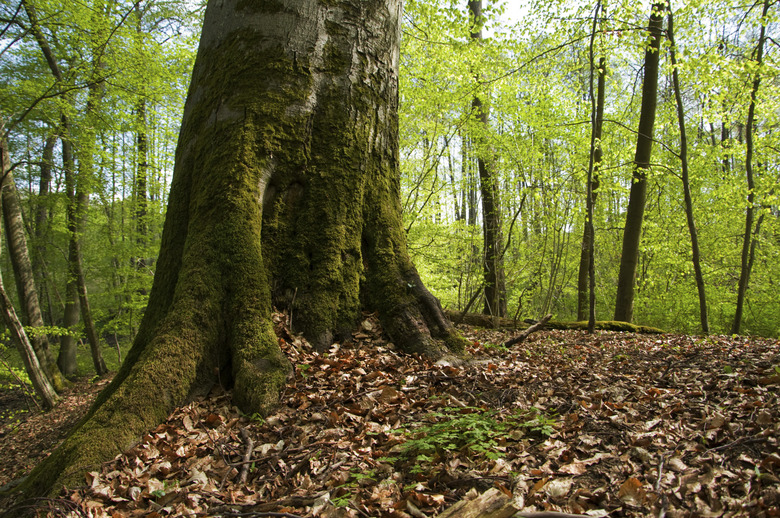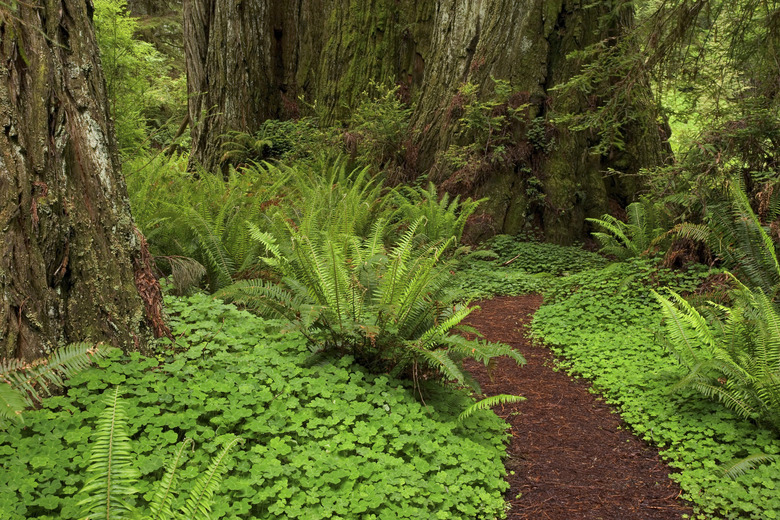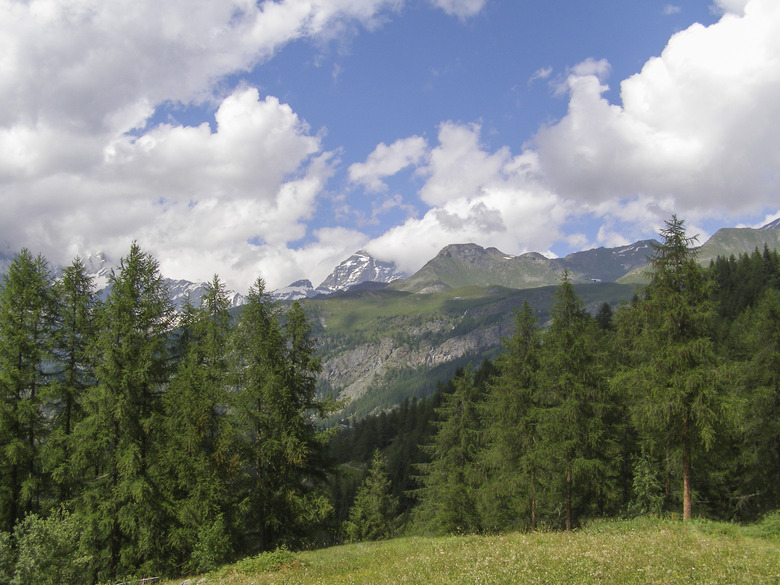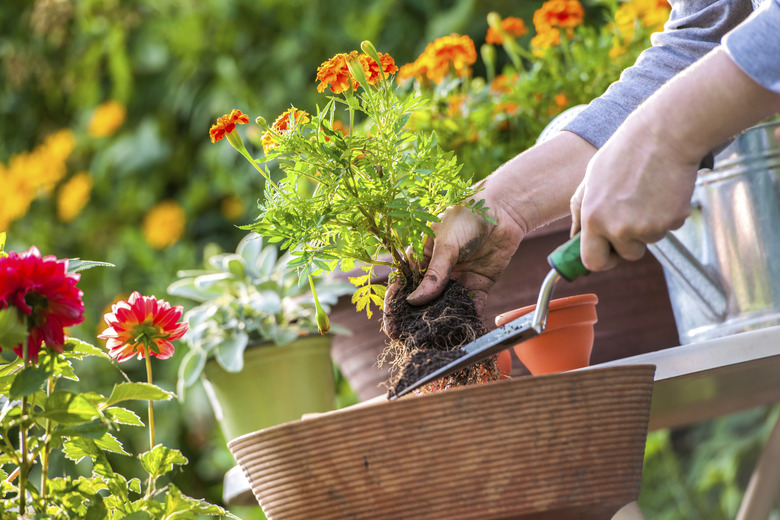Mosses, Ferns, Conifers & Flowering Plants
Vegetation has been growing, adapting and evolving for millions of years and in that time plants have diversified into many distinct groups. Within these groups are divisions that include the rarest flowers and the most common pine trees. In fact, the most visible divisions of the plant kingdom include mosses, ferns, conifers and flowering plants.
Mosses
The first mosses developed approximately 350 million years ago and have been around longer than conifers and flowering plants; they have since diversified into approximately 10,000 species. Most mosses prefer dark and moist places to grow and can often be found on logs or under shrubs in wooded areas. These small plants start out as spores, carried by the wind until they land in a suitable area. Once there, these spores produce rhizoids, small root-like organs that reach into the surface and anchor the plant to a spot. Once the plant is set in place, it begins to grow shoots that eventually open up and release more reproductive spores. Mosses are regarded as a transitional plant, since they retain chemical similarities to their ancestral water-bound algae while producing physical characteristics of later land plants.
Ferns
Ferns, another spore-producing type of plant, date back to the Devonian period (354 million years ago) and are the second most diverse type of plant. These plants are known for their distinctive leafy fronds. Underneath these fronds are small prothalli, or spores. The spores are equipped with both male and female sex cells, and when blown to a new area can fertilize and begin growing immediately.
Conifers
Conifers include pines, firs, sequoias and many other trees that have scaly or needle-like leaves. These leaves are designed to withstand severe cold and lack of water and can stay green all year round using less energy than flowering plants. These plants evolved before flowering plants about 300 million years ago and still live all over the world, although they are particularly numerous in the Northern Hemisphere. Conifers are gymnosperms and reproduce by wind blowing pollen from male cones onto female cones. The longest-lived conifer is the Great Basin bristlecone pine, which can live up to 5,000 years.
Flowering Plants
Flowering plants–angiosperms–are the youngest of the four varieties, coming into existence as recently as 130 million years ago. These plants are also the only ones to reproduce sexually, by cross-pollination with other plants of the same species. This has proven to be a successful design change and in fact there are as many as 260,000 identified species of flowering plants, making this arguably the most diverse plant group on the planet. Flowering plants include deciduous trees, flowers, vegetables, fruits, vines and shrubs. Many of these plants have also formed bonds with insects and other animals, which aid in the pollination process in exchange for nectar.
